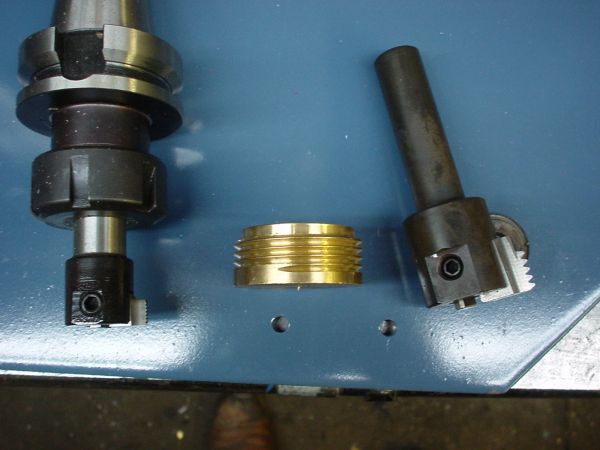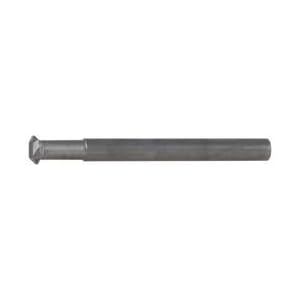My suggestion, after having done a bit of it, is to test the program spit out by the Mach wizards carefully before running it on a part. Once you get the idiosyncracies out of the way, it's really cool watching that little tool wind it's way around and make you a female M17x0.75 or male 3/4" GHT (Garden Hose Thread-- look up the specs on that one sometime

) or whatever you desire.
I've only ever done it with single-point tools (the frisbee-on-a-stick ones) as-seen here
With one 60' cutter, you can cut a lot of different threads (from female threads the diameter of the tool up to until you run out of tooth on the cutter). They aren't cheap, but ought to be a whole lot more popular amongst the home CNC crowd for larger threads. You don't need a synchronized spindle or anything fancy beyond a 3-axis mill.
It should be relatively easy to make them from drill rod for softer metals as well-- the geometry is a whole lot simpler than a gear cutter, but the basic idea is the same.
I found I had to fiddle with the final code & wizard a little to get the fit I wanted, so be prepared to make some test parts. Speeds and feeds wise, they say to run them like an endmill of the same diameter as the cutting edge, but I tend to baby mine..







